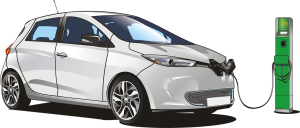So, you’ve probably noticed these charging stations start to pop up – sometimes in supermarket parking areas, definitely at your local gas refilling station, and perhaps even on your neighbor’s drive. How do these charging stations transfer power to electric cars? How do electric car engines differ from combustion engines, and what does this all mean for the consumer? Here is a breakdown of information from various websites. Hopefully, it will make the answers to these questions straightforward and simple.
The Basic Parts
The basic parts or components which enable the car to receive a charge, store electricity and then convert it into motion are:
- a charge port
- an inverter
- an electric traction motor
- an electric powertrain
- a traction battery pack
Briefly speaking the functionality of each part works as follows:
Charge Port
The charge port is the plug receiver – if you think of your car as a kettle (or any other electrical device in your home) the charge port is the hole with prongs which connects the electrical wire from the device to the wall socket. The official name of the charge port is Electric Vehicle Supply Equipment which is a bit of a mouthful and so is commonly known as an EVSE. These usually require a standard 240-volt outlet which is similar to the requirement of most household appliances. The genius of this means that every house has the ability to support a charging station and electric vehicle without the headache of specialized voltage.
Inverter
The inverter is a pretty smart piece of technology. Don’t worry if you are a bit confused. Trying to comprehend the inner workings of electricity is difficult. Apparently, the inverter enables the direct current of electricity from the charging station to enter into the battery pack and then store it in the battery-friendly mode. But our magical little inverter has not finished its job – it then adjusts the current again into the alternating current from the battery to the engine so as to power the forward trajectory of the vehicle. These inverters are also able to adjust the frequency of the alternating current – this directly translates to the speed of your car’s wheels. After all, just one speed on a car is about as useful as a sun bed in the desert. And then, if all this wasn’t enough, modern inverters used in some electric vehicles are also able to retrieve energy not used or generated during the deceleration process!
Motor
The electric traction motor is pretty self-explanatory. Instead of relying on the internal combustion, gas-fueled engine to create power and animate the wheels of your car, the electrical engine is fed the power sourced from the inbuilt battery pack. It makes sense then that these engines are quieter, more efficient, and a lot cleaner than their gasoline or diesel counterpart.
Powertrain

An electric powertrain describes all the components of your electric vehicle in a harmonized, cohesive system. It is made up of a charge port, inverter, motor, and battery. When all these individual parts are working together to create motion in your vehicle, you know that your powertrain is doing its job well.
The traction battery pack in most electric vehicles is known as a lithium-ion battery. This is a powerful system of storing energy received from the charging station in as small a physical space as possible. They are also able to create very large currents and transfer the resulting energy to the entire powertrain quickly and efficiently. What also makes these batteries so remarkable is the longevity of their power. According to this website, one fully charged lithium battery can allow an electric vehicle to travel an average of 341 km (211 miles).
This is obviously dependent on a range of factors such as speed and road conditions, but the same website reckons that this distance may even extend to as much as over 600 kilometers (over 400 miles)! And then, when you consider that all electric vehicle charging stations are compatible with all car models, your car can be topped up wherever your long-distance excursion has taken you.
Charged Up for Travel
There are three options to recharge your car. The simplest method is just at home with no special devices or equipment – just a domestic, home use electric cable. Using this low 120-volt outlet, you should allow a good overnight period of time to fully power up the engine. It’s estimated that one hour of plug-in time translates to 2-5 miles worth of power.
If, however, you are able to install a specialized home or public charging station, the wait is much shorter. Think 10-25 miles worth of power per hour charging.
DC fast charge is the cream of the charging crop – this can infuse the entire battery recharge in just 15-45 minutes. This fantastic video summarizes the EV charging process nicely:
The positive implications of an electrically powered engine over a gasoline or diesel one is enormous. The design and performance of electric engines are constantly benefitting from further research.

